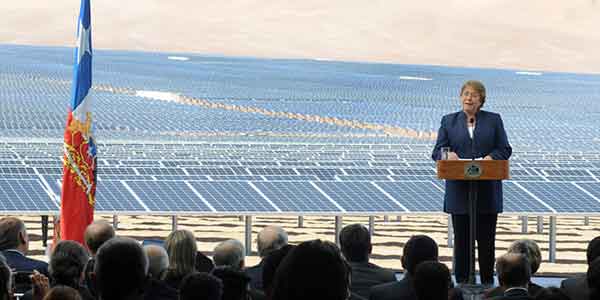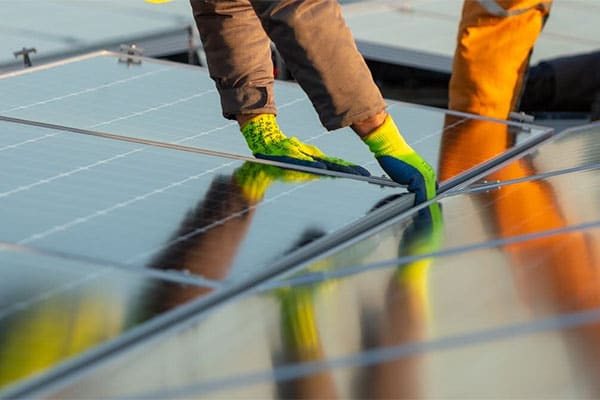BLOOMBERG: Chile Has So Much Solar Energy It’s Giving It Away for Free
While this may be good for consumers, it’s bad news for companies that own power plants struggling to generate revenue and developers seeking financing for new facilities.
Chile’s increasing energy demand, pushed by booming mining production and economic growth, has helped spur development of 29 solar farms supplying the central grid, with another 15 planned. Further north, in the heart of the mining district, even more have been built. Now, economic growth is slowing as copper output stagnates amid a global glut, energy prices are slumping and those power plants are oversupplying regions that lack transmission lines to distribute the electricity elsewhere.
“Investors are losing money,” said Rafael Mateo, chief executive officer of Acciona SA’s energy unit, which is investing $343 million in a 247-megawatt project in the region that will be one of Latin America’s largest. “Growth was disordered. You can’t have so many developers in the same place.”
Continue to the entire article
CBC: Billions expected to be spent on green energy in Alberta, Saskatchewan
With up to $50 billion to be spent on renewable energy projects in Alberta and Saskatchewan over the next 14 years, suppliers want details on how the money will be spent and which projects they can bid on.
The estimate came Thursday from David Hickey, of Siemens Canada’s wind and renewables division, speaking at a panel in Calgary. More than 400 renewable energy business leaders and bankers are in the city trying to figure how to get some of the billions governments will soon spend on renewable energy.
Alberta will unveil its program in the fall and begin accepting bids from the private sector by end of the year. It’s currently reviewing a report by the Alberta Electricity System Operator (AESO) about how to have a competitive procurement process for renewables.
Continue to the entire article
COMPUTER WORLD: Renewable energy now supplies a quarter of the world’s power
International investment in renewable energies reached $286 billion last year, double that of fossil fuels even as oil and gas prices continue to tumble.
Jobs in the renewable energy sector (not including large-scale hydropower) increased in 2015 to an estimated 8.1 million, according to the 59-page Renewables Global Status Report, generated by the Renewable Energy Policy Network for the 21st Century (REN21).
In parallel with growth in markets and investments, 2015 saw continued advances in renewable energy technologies, ongoing energy efficiency improvements, increased use of smart grid technologies and significant progress in hardware and software to support the integration of renewable energy, as well as progress in energy storage development and commercialization.
Continue to the entire article
THE HILL: 2016 is a breakthrough year for solar
Over the past few months, we’ve seen a rush of exciting developments in solar, some giving us insight into how distributed energy may work in the future.
Thanks to tax credits (ITC) being renewed, 2016 will be a breakthrough year for U.S. solar, rising a stunning 119 percent. Sixteen gigawatts (GW) are expected to be installed, shattering last year’s record 7.3 GW, according to the Solar Energy Industries Association (SEIA) and GTM Research. In February, we passed a wonderful milestone as the millionth home was outfitted with a solar system. About 300,000 Americans will install solar this year.
Sixty of the world’s largest corporations have joined the Renewable Energy Buyers Alliance (REBA), to make it easier for companies to buy renewable energy directly from utilities. Right now, it’s complicated: They either have to negotiate separately with utilities to get the amount of energy they need or sign long-term power purchase agreements with developers. Smaller companies don’t use enough electricity to participate. The alliance is challenging utilities to add 60 GW by 2025.
Continue to the entire article













Comments